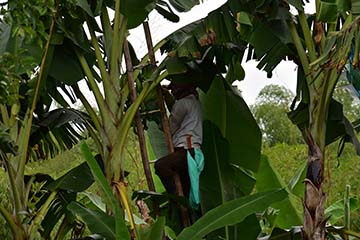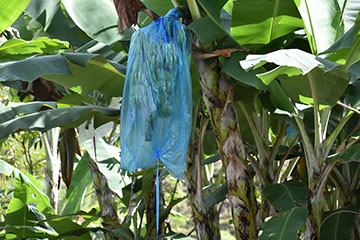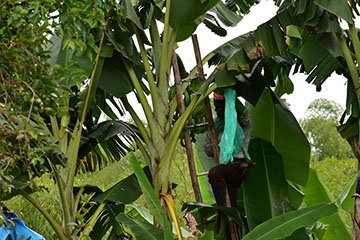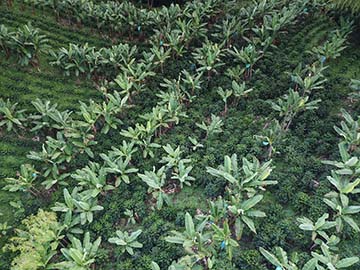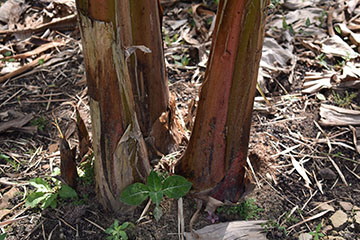
A Plantain plant reproduces by "children" that sprout from its roots, or rhizome, as it is properly called. Although a plant can produce many children, they are normally prunned to select the strongest, leaving just three generations: mother, daughter, grandchild.

When the plant is short of a year old, it produces a flower from which the plantains grow, as can be seen in this image.
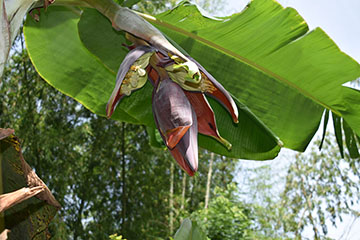
The flower is the last thing the plant produces after growing all its leaves. From that moment on, the plant uses all its energy to feed the fruit.
